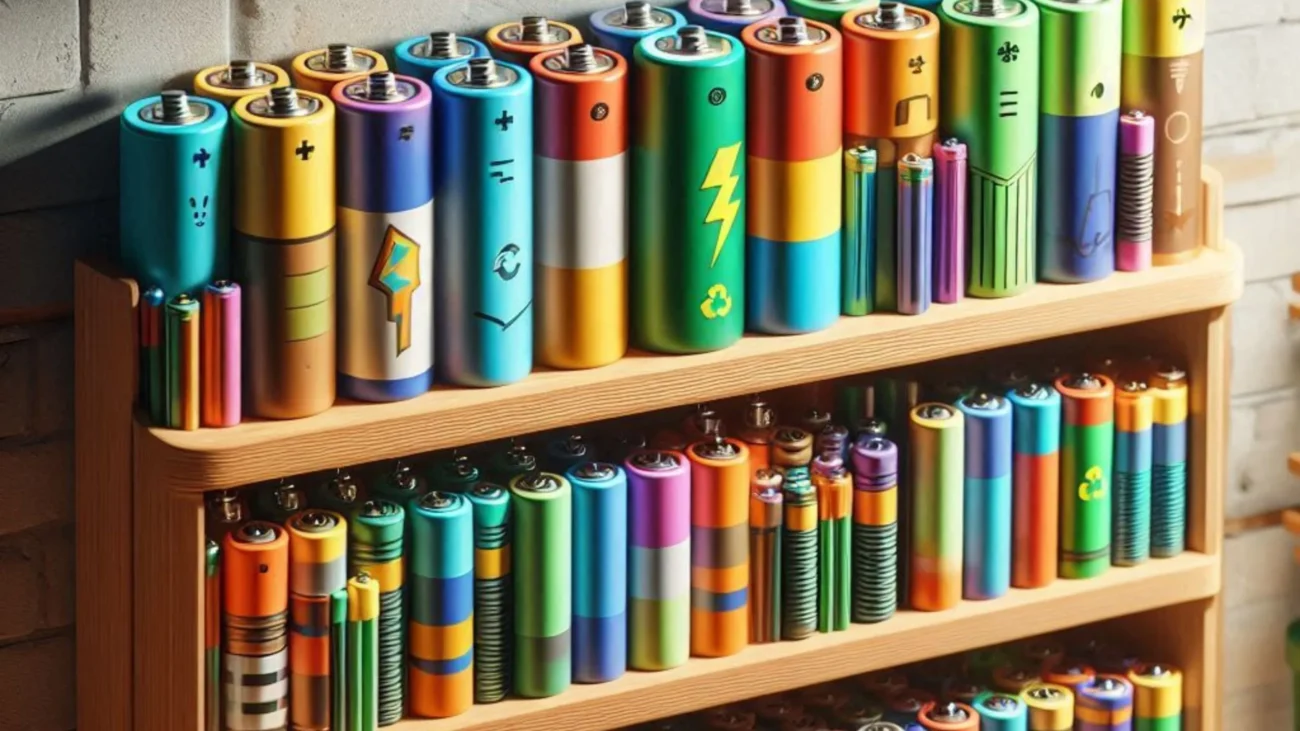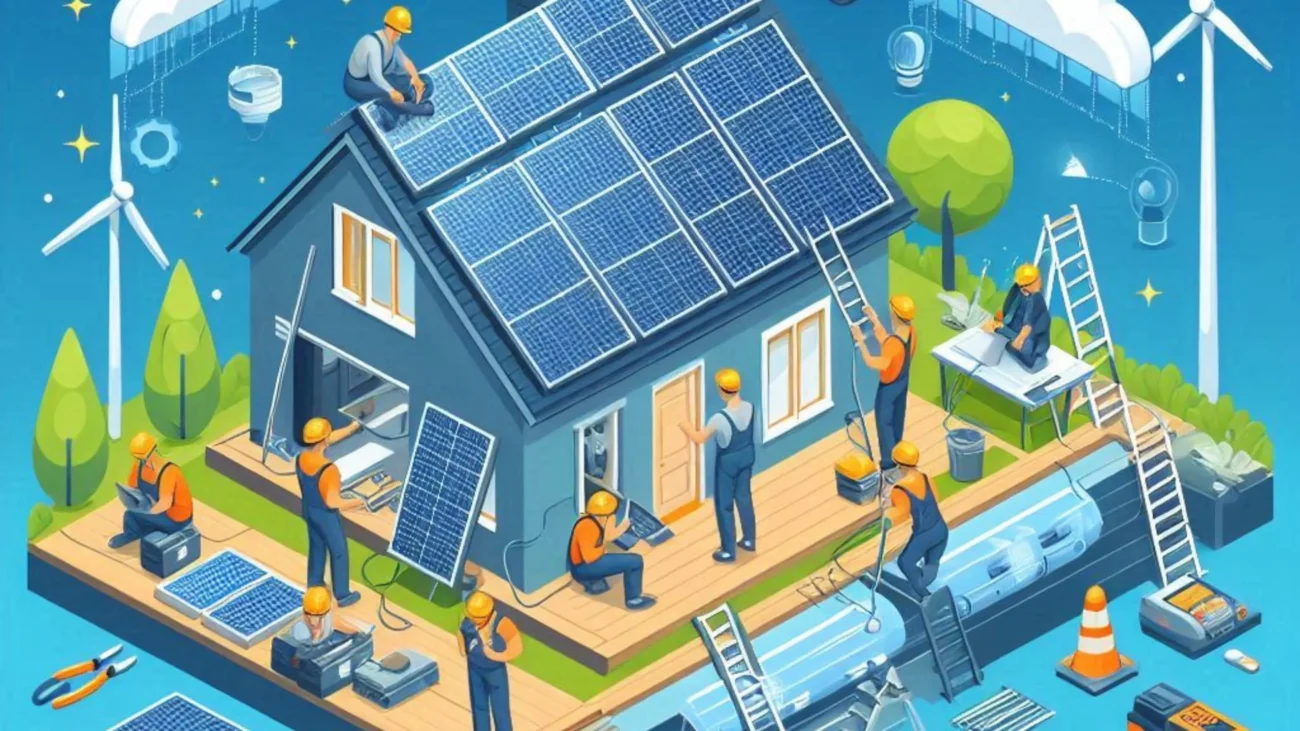As the world shifts towards sustainable energy solutions, building an affordable solar power system has become increasingly viable and essential. Harnessing solar power can drastically reduce energy bills and lessen our environmental impact. Here, we present a comprehensive guide to constructing an efficient and cost-effective solar power system.
In This Post
Understanding Solar Power Systems
Before diving into the construction process, it is crucial to understand the components and workings of a solar power system. A typical solar power system comprises:
- Solar Panels: Convert sunlight into electricity.
- Charge Controller: Regulates the voltage and current coming from the solar panels to the batteries.
- Batteries: Store energy for later use.
- Inverter: Converts stored DC power into AC power for home use.
- Mounting and Racking System: Secures solar panels in place.
- Wiring and Electrical Components: Connect all parts of the system.

Selecting the Right Solar Panels
Types of Solar Panels
Solar panels are the heart of any solar power system reviews . There are three primary types:
- Monocrystalline Solar Panels: High efficiency and space-efficient but more expensive.
- Polycrystalline Solar Panels: Slightly lower efficiency but cheaper.
- Thin-Film Solar Panels: Least efficient but the most affordable and flexible.
Calculating Energy Needs
To determine the number of solar panels blog required, calculate your household’s energy consumption. This can be done by analyzing your electricity bills over a year. The average household in the U.S. consumes around 10,400 kWh annually, or approximately 870 kWh per month.
Choosing a Charge Controller
Charge controllers come in two types:
- PWM (Pulse Width Modulation): Cheaper but less efficient.
- MPPT (Maximum Power Point Tracking): More expensive but maximizes the energy harvest.
For a budget-friendly system, a PWM controller is a practical choice, especially for small to medium-sized setups.
Selecting Batteries for Storage
Batteries store the electricity generated by solar panels. The two main types of batteries are:
- Lead-Acid Batteries: Affordable and widely used, but have a shorter lifespan and lower depth of discharge.
- Lithium-Ion Batteries: More expensive but offer a longer lifespan, higher efficiency, and deeper discharge.
For cost-effective systems, lead-acid batteries are the go-to option.

Inverters: Converting DC to AC
Inverters are essential for converting DC power from the batteries into AC power used by household appliances. There are three types of inverters:
- Pure Sine Wave Inverters: Best quality but most expensive.
- Modified Sine Wave Inverters: Cheaper but may not work with all appliances.
- Square Wave Inverters: Least expensive but least efficient.
A modified sine wave inverter is often the best balance between cost and functionality.
Mounting and Racking Systems
Ground Mounts vs. Roof Mounts
- Ground Mounts: Easier to install and maintain but require more space.
- Roof Mounts: Space-efficient but can be more challenging to install and maintain.
DIY vs. Professional Installation
While professional installation ensures quality and safety, it can be costly. Opting for DIY installation can significantly reduce costs if you have the necessary skills and tools.
Wiring and Electrical Components
Ensure you have the right gauge of wire to handle the current safely. Use MC4 connectors for solar panels guides and make sure all connections are secure and weatherproof.
Step-by-Step Guide to Building Your Solar Power System
1. Planning and Design
- Assess Your Energy Needs: Calculate your average energy consumption.
- System Sizing: Determine the number of solar panels and battery capacity needed.
- Site Survey: Choose the best location for your panels with maximum sun exposure.
2. Purchasing Components
- Solar Panels: Buy from reputable manufacturers.
- Charge Controller: Select based on system size and budget.
- Batteries: Choose based on lifespan and capacity requirements.
- Inverter: Select based on household needs.
- Mounting System: Choose ground or roof mounts based on your site survey.
- Wiring and Connectors: Ensure compatibility and safety.
3. Installation
- Mounting the Panels: Install the mounting system and attach solar panels securely.
- Connecting the System: Wire the panels to the charge controller, then to the batteries, and finally to the inverter.
- Safety Checks: Ensure all connections are secure and follow safety protocols.

4. Testing and Monitoring
- Initial Testing: Check all components to ensure they are working correctly.
- System Monitoring: Use monitoring systems to track performance and identify issues.
Maximizing Efficiency and Lifespan
Regular Maintenance
- Cleaning Panels: Keep panels clean to ensure maximum sunlight absorption.
- Battery Maintenance: Regularly check and maintain batteries to prolong their lifespan.
- System Checks: Periodically check the entire system for any signs of wear or issues.
Optimizing Performance
- Angle Adjustment: Adjust the tilt of the panels seasonally to maximize exposure.
- Shade Management: Ensure no shading on the panels throughout the day.
Conclusion
Building a cheap solar power system travelers is a practical and rewarding endeavor. By carefully selecting components and following the steps outlined above, you can create an efficient, cost-effective system that meets your energy needs and contributes to a sustainable future.
FAQs
What are the initial costs involved in building a cheap solar power system?
The initial costs of building a cheap solar power system range from $1,000 to $3,000. This includes expenses for solar panels, batteries, a charge controller, an inverter, and mounting hardware. Using refurbished or second-hand components can further reduce costs.
Can I install a solar power system myself, or do I need professional help?
You can install a solar power system yourself if you have basic electrical and construction skills, using DIY guides. However, professional installation is recommended for larger systems to ensure safety, compliance with local regulations, and optimal efficiency.
How much space do I need for a solar power system?
The space required for a solar power system depends on the number of panels and their wattage. Typically, a standard 300-watt solar panel measures about 65 inches by 39 inches. For a small household system, around 100-200 square feet of roof or ground space is needed.
What maintenance does a solar power system require?
A solar power system requires minimal maintenance, including regular cleaning of panels to remove dust and debris, periodic checks of batteries and connections for signs of wear or damage, and ensuring all connections are secure and corrosion-free. Regular inspections help maintain efficiency and prolong system lifespan.
How long do the components of a solar power system last?
The components of a solar power system typically last as follows:
Solar Panels: 25-30 years
Batteries: Lead-acid (3-5 years), Lithium-ion (10-15 years)
Inverters: 10-15 years
Charge Controllers: Up to 10 years
Proper maintenance can extend the lifespan of these components.
Can a solar power system completely eliminate my electricity bill?
A solar power system can significantly reduce or even eliminate your electricity bill if it’s sized correctly to meet your energy needs. However, you might still incur small costs for grid connection fees or if your energy consumption occasionally exceeds what your system generates.
What incentives are available for installing a solar power system?
Incentives for installing a solar power system include:
Tax Credits: Deduct a percentage of installation costs from your taxes.
Rebates: Direct payments from government or utility companies.
Net Metering: Sell excess power back to the grid.
Grants and Loans: Financial assistance programs for solar installations.
Check local government and utility company offerings for specific incentives.
What are the environmental benefits of using a solar power system?
The environmental benefits of using a solar power system include:
Reducing Greenhouse Gas Emissions: Solar energy is clean and renewable, reducing reliance on fossil fuels.
Lowering Air Pollution: Solar panels do not emit harmful pollutants.
Conserving Water: Solar power systems use significantly less water compared to coal or nuclear power plants.
Reducing Carbon Footprint: Helps mitigate climate change by lowering overall carbon emissions.
Can solar power systems work during cloudy days or at night?
Solar power systems generate less electricity on cloudy days but still produce some power. However, they do not generate electricity at night. To provide power during these periods, solar power systems rely on stored energy in batteries or backup sources like the grid.
What should I consider when choosing a solar power system provider?
When choosing a solar power system provider, consider:
Reputation: Look for reviews and testimonials.
Experience: Choose a provider with a proven track record.
Warranties: Ensure good warranties on products and installation.
Customer Support: Select a provider with reliable after-sales support.
These factors ensure a smooth installation and long-term satisfaction with your solar power system.
